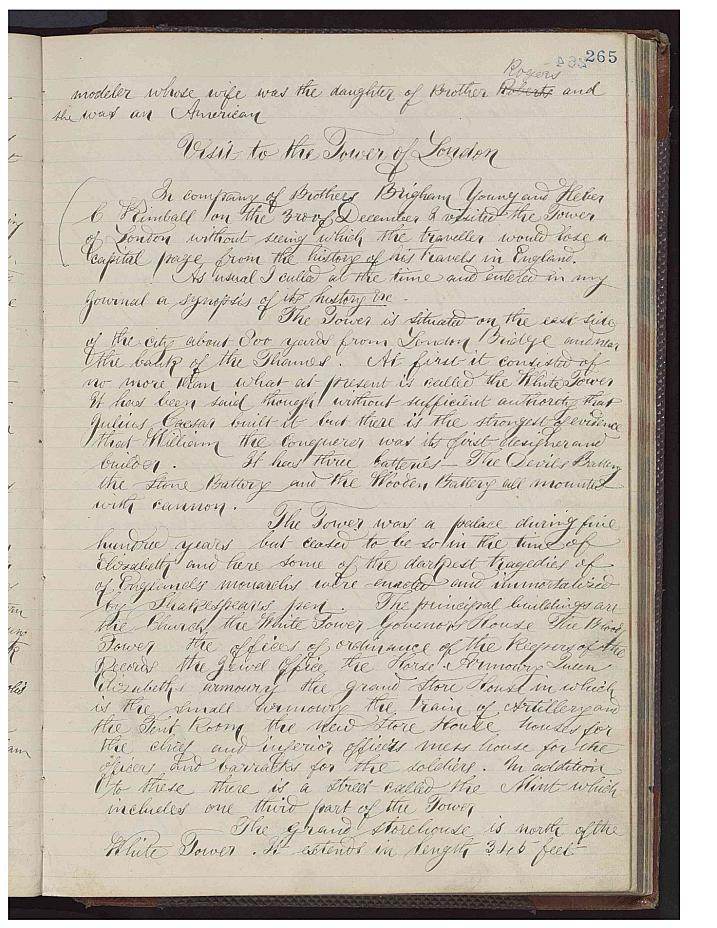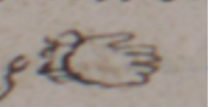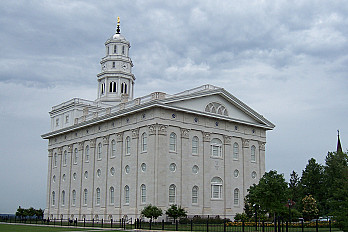
Day in the Life
Journal Entry
Dec 3rd [FIGURE] From After a long Days walk throug[h]
through the city of London we returned to
our room whare our friend Mr's Morgan presente[d]
us with a bundle of letters [FIGURE] one was from
my Dear Phebe Dated Oct 6th to 16th. It brought
much knews of interest. I also received 2 lett[ers]
from P. P. Pratt. H. C. Kimball Received a letter
from his wife Also written about the same
time, which was also interesting Brother Young
received 2 one from J Taylor & A Cordon
A Visit to the Tower of LONDON
I visited the Tower of London on the 3rd of Dec
in company with Elders B. Young & H. C. Kimba[ll]
The following are short extracts from the History of
the TOWER OF LONDON
The Tower is situated on the east side of the
city, about eight hundred yayrds from London
bridge near the bank of the River Thames. This imp-
ressive edifice, at first consisted of no more than
what at present is called the white Tower, and with-
out any authority, has been reported to have been
built by JULIUS CÆSAR, though there is the strongest
evidence of its being marked out, and a part of it first
erected by William the Conqueror, in the year
1078 [FIGURES] It contains three Batteries, the first is
called the Devils Battery, second Stone Battery third
Wooden Battery mounted with Cann. [FIGURES]
The Tower was a Palace during five hundred
years, and ownly ceased to be so on the accession
of Queen Elizabeth. Here observes Mr Penant,
"fell the meek usurper Henry VI by the dagger
of the profligate Gloucester. Here full of horrors
died by the hands of hired ruffians, the unsteady
Clarance, who can read without shuddering
his dreadful dream, which Shakespear makes
him relate to the Lieutenant's (Richard III Act 1
Scene 4th) And here the sweet innocents Edward
VI and his brother the Duke of York, fell victi-
ms to the violent ambition of there remoseless
uncle."
The principal buildings are
the church, the white Tower, Governor's House
the Bloody Tower, the offices of Ordnance
of the keepers of the Records, the Jewel Office
the Hors Armoury, Queen Elizabeth's Armoury
the grand Store House in which is the Small
Arm Armoury, the train of Artillery, and the
tent room; the New Store House, wharein are
three Store Roomns's Houses for the chief and infer-
ior Officers, the Mess House for the officers of
the Garrison, and the Barracks, for the Soldiers. In
addition to those there is a street called the Mint
which includes nearly one third part of the Tower.
The principal part of the houses were formerly in-
habited by the officers employed in the coinage, but now
principally by the Military, Government having erect-
ed a vary extensive and majestic structure to the north
of Little Tower Hill, for the business of the Mint
department, with houses for those officers
The Grand Storehouse is north
of the white Tower, a fine building of brick and hewn
stones; it extends in length 345 feet, and is 60 feet
broad, it was commenced by James II and finished
by William III. On the first floor of this edifice
is that magnifficent room called the Small Armoury,
in which he, with Queen Mary his consort, dined in
great state haveing all the warrent workmen and
labourers to attend them, dressed in white gloves &
aprons.
THE HORSE ARMOURY.
Here in one spacious room, 150 feet by 33 are
arranged in regular and chronological order, no less
a number than twenty two equestrian figures,
comprising many of the most celebrated kings of
England accompanied by their favorite Lords
and men of rank, all of them, together with their
horses in the armour of the respective periods when
they flourished, many, indeed, in the identical suits
in which they appeared while living. Along the
centre of the ceiling immediately over each figure
is a gothic arch in the centre of which is suspended
a banner which in gold letters on both sides, expres-
ses the name, rank, and date of existence of the
personage represented. The horses stand, mounted
by their riders, almost without any visible supp-
ort on a floor of brick raised a little from the adj-
oining doarded flooring which is appropriated to the
spectators.
1. EDWARD I, King of
England AD 1272. The armour of this figure consists
of the hawberk and its sleeves of mail, the hood & chau-
sses of the same material [FIGURE] This monarch is represent-
ed in the act of sheathing his sword.
2 Henry VI,
King of England AD. 1450 This plate armour is of the
most beautiful form, particularly the back
plate, which, like that of the breast is made
of several pieces to be flexible. [FIGURES] the
saddle of bone work is particular curious
3. Edward IV, King of England
AD. 1465. This is a complete suit of tournament
armour, finished with the additional pieces termed
grand guard, volant-piece and gard-de-tras. [FIGURES]
4.th Henry VII, King of England
AD. 1508. This is a fluted suit of elegant form
probably of German manufacture
5. Henry VIII, King of England AD.
1520. This monarch appears in a suit of plate armour
gilt. [FIGURE] It is impossible to give a just summary of this
prince's qualities, he was so different from himse-
lf in the several periods of his life. [FIGURE] In his youth
he was sincere, open, gallant, and liberal; in his more
advanced years, he became rapacious, arbitrary,
violent, superstitious, obstinate, unjust, and cruel. He
had six wives. After he had been married 20 years
to the first, he grew weary of her, and from a pretended
scruple of conscience, put her away. His second
wife, the incomparable Queen Ann Boleyn, mother
of Queen Elizabeth, he beheaded upon slight
ground of jealousy. He was weary of the third as
soon as soon as he was married to her. The immature
death of the fourth, perhaps prevented an untimely one.
The fifth was beheaded as her predecessor Queen Anne
was, though less innocent than Queen Ann of the
crime for which she sufferd. The sixth Queen
Catherine parr was a most religious lady, and was
so able a christian, that she had nearly disputed
her head off. Had the King lived a little longer he
would probably have made a new choice. But
he died Janury 28th 1547, after a reign 37 years
and 9 months, and in the 56th years of his age
6. Charles Brandon, Duke of Suffolk
1520. He also Is represented in plate armour.
7. Edward Clinton Earl of Lincoln
AD 1535. This noblemans armour is vary elegantly
gilt, and his right hand rests on a mace. He w^e^ars a long
fluted sword.
8. Edward VI, King of England
AD 1552. This figure is particularly desierving of notice
both on account of its armour, which is what was
termed russet and gilt in the most curious manner
throughout & also for the fine Attitude in which
it is placed. (Turn over 5 leeves continued)
 [FIGURE]
[FIGURE]
After visiting the Tower we walked to the
Thames & waited for Elder Young who went
through the Tunnel & visited it & purchased a pattern
of the Tunnel for 13/ which presents an exact
likeness of it. We then walked across London
Bridge & returned to our Room in Ironmonge[r]
Row. We held a meeting in the evening Elder
Young preached. Distance of the day 10 m
People
Browse people Wilford Woodruff mentioned on this day in his journal. Click on the person's name to view a short bio and other pages they are mentioned on or click on "View in Family Search" to view their FamilySearch profile.
Places
Browse places mentioned in Wilford Woodruff's journal entry on this day. Click on the place names to view other pages where they are mentioned.
Related Documents
Browse other documents with this same date. These could include pages from Wilford Woodruff's autobiographies, daybooks, letters, histories, and personal papers. Click on the document titles to view the full document.


Events
View selected events in the two months surrounding this date in Wilford Woodruff's life. Click on the dates to jump to that day in Wilford Woodruff's journal.

